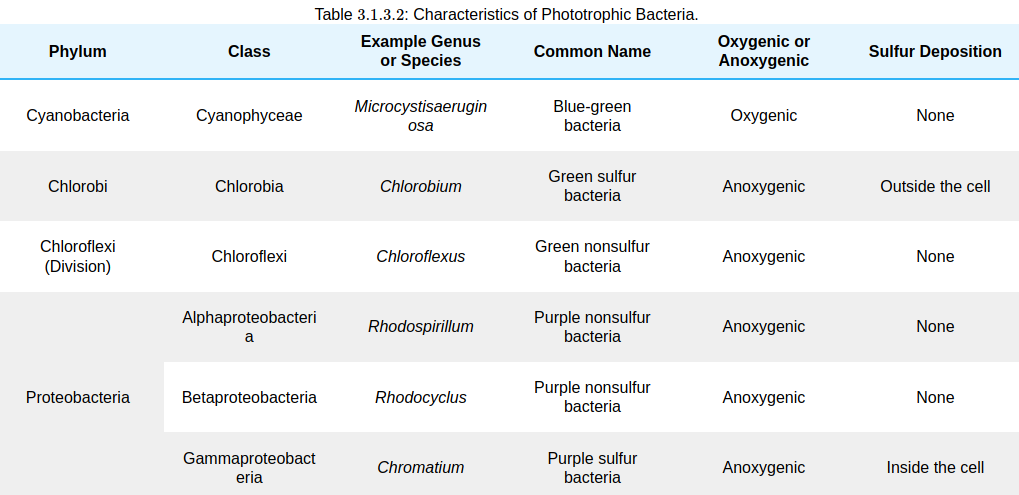Bacteria
2022-08-26: reference:
Bacteria #
-

- Gram-positive vs gram-negative (named after a dude named Gram, not the measurement): They have cell walls made of peptidoglycan (murein), a protein-sugar polymer thing. The former’s walls are thick, and gram-negative is thin, but also has a Lipopolysaccharide-containing outer membrane. Indeed, gram-positive do not produce endotoxin.
- It seems they also have whatever Porin is, while gram-positive has Lipoteichoic acid.
- Legumes form mutualistic relationships via root nodules with Rhizobiales nitrogen-fixing bacteria and feed it a little sugar.
- Nitrogen fixation is carried out by diazotrophs (there exist archaea bacteria, including cyanobacteria) when these bacteria uptake atmosheric nitrogen, and do as follows: ${\displaystyle {\ce {N2 + 16ATP + 16H2O + 8e- + 8H+ -> 2NH3 +H2 + 16ADP + 16}}}{\displaystyle {\text{P}}_{i}}$
-

- Basically, atmospheric $\ce{N2}$ is useless to all but a few microorganisms.
-
Cyanobacteria #
-

- Gram-negative photosynthetic cells. First known oxygen-producing organisms, responsible for the earth’s “Great Oxidation Event”. Paleontology moment.
- They do typical photosynthesis (i.e. $\ce{6CO2 + 6H2O ->[Sunlight] C6H12O6 + 6O2}$)